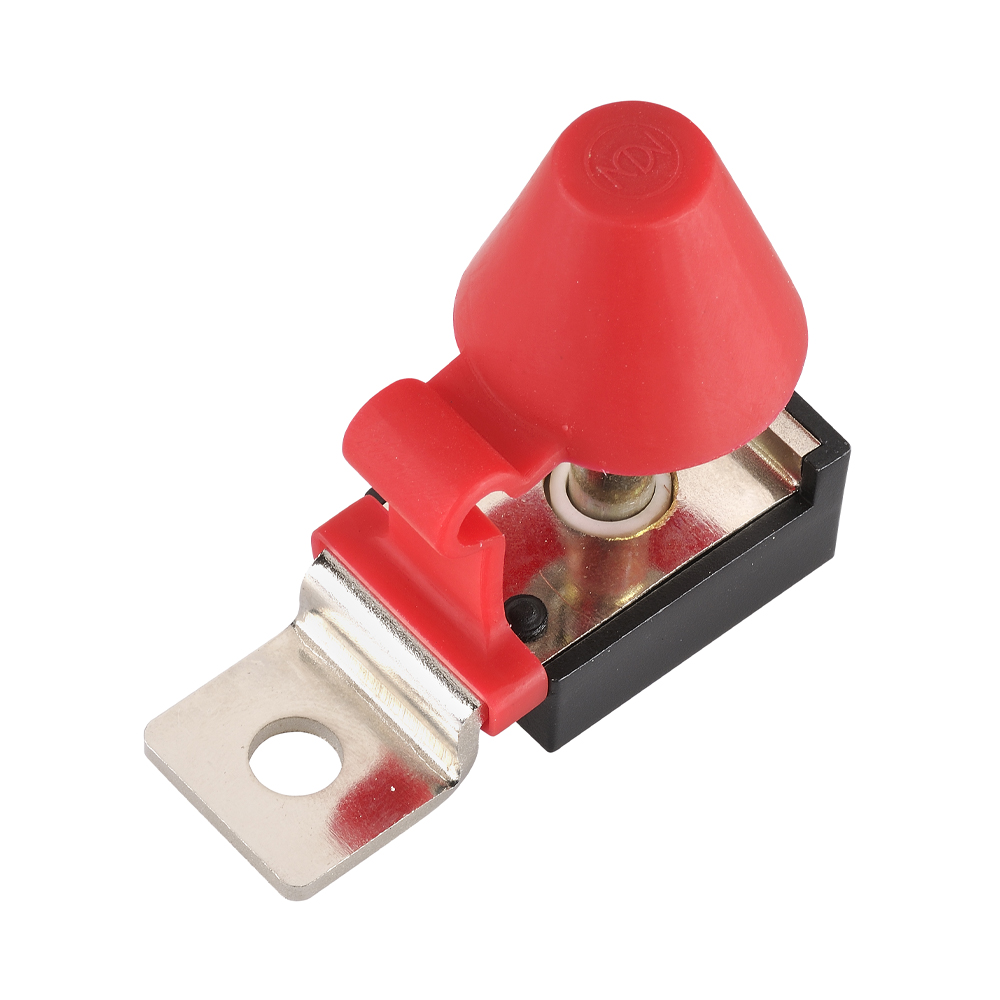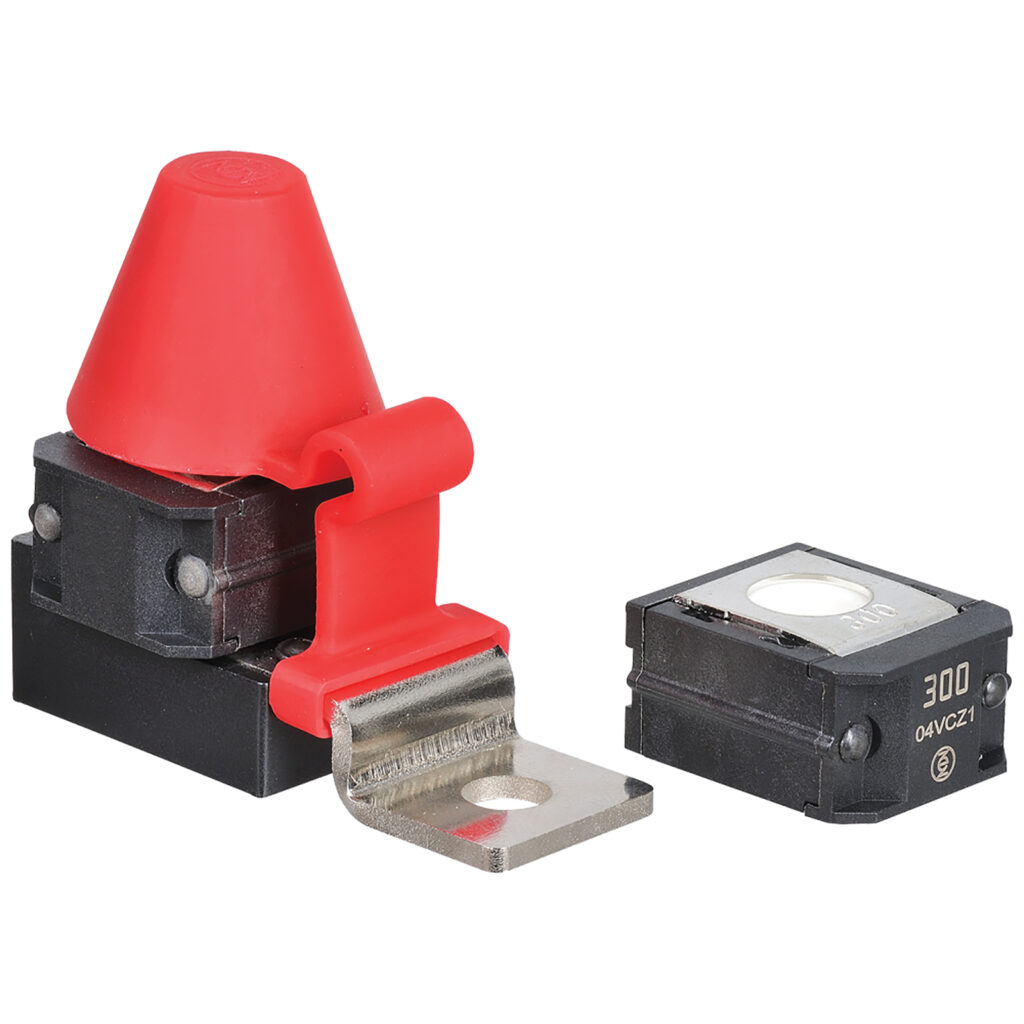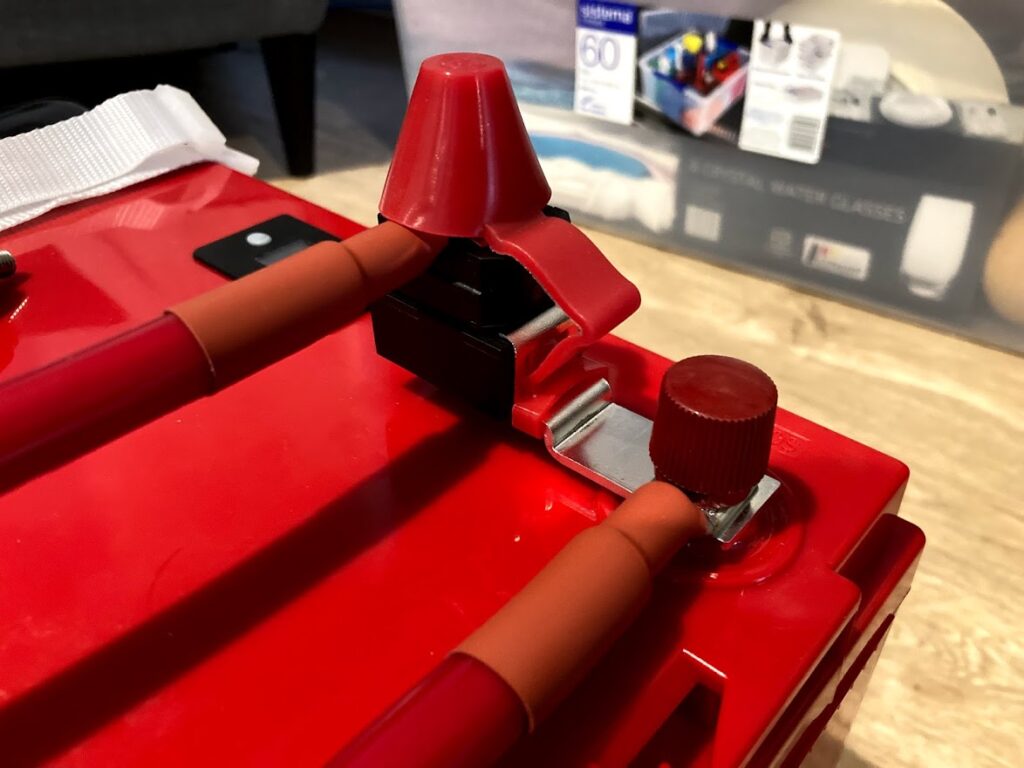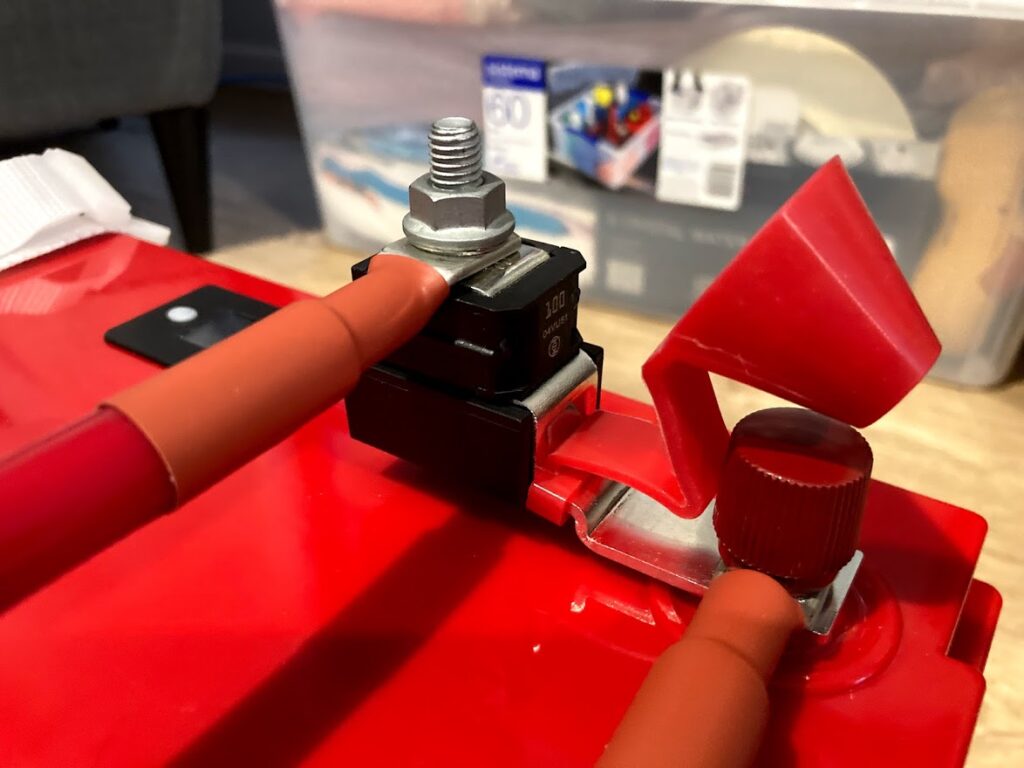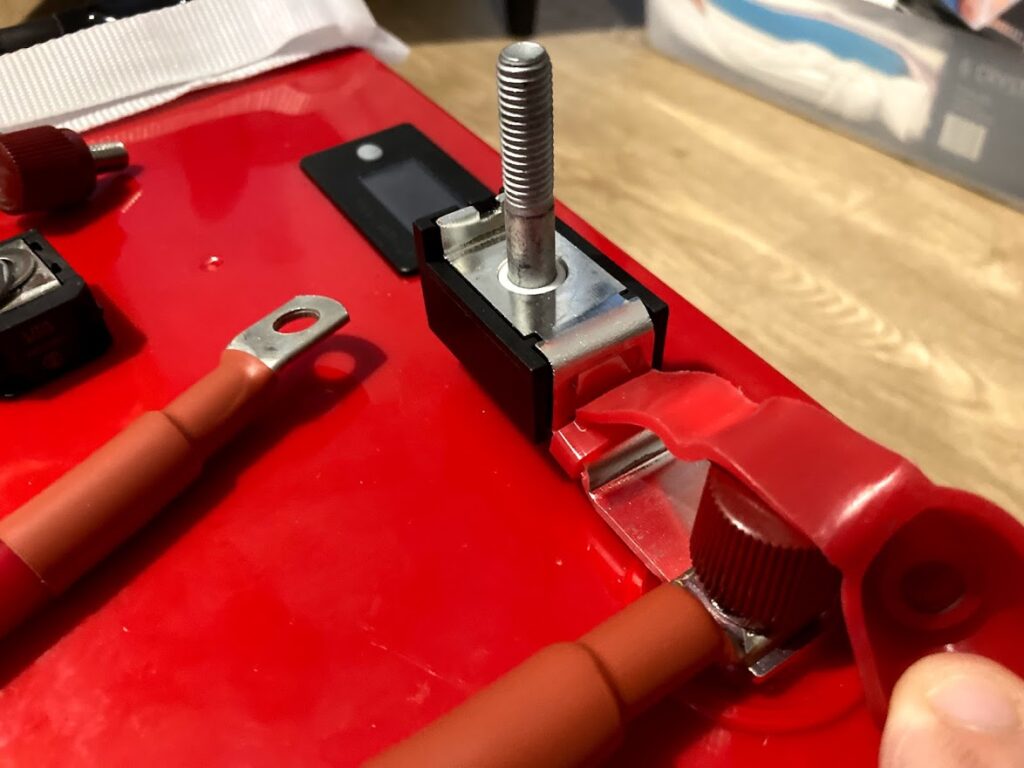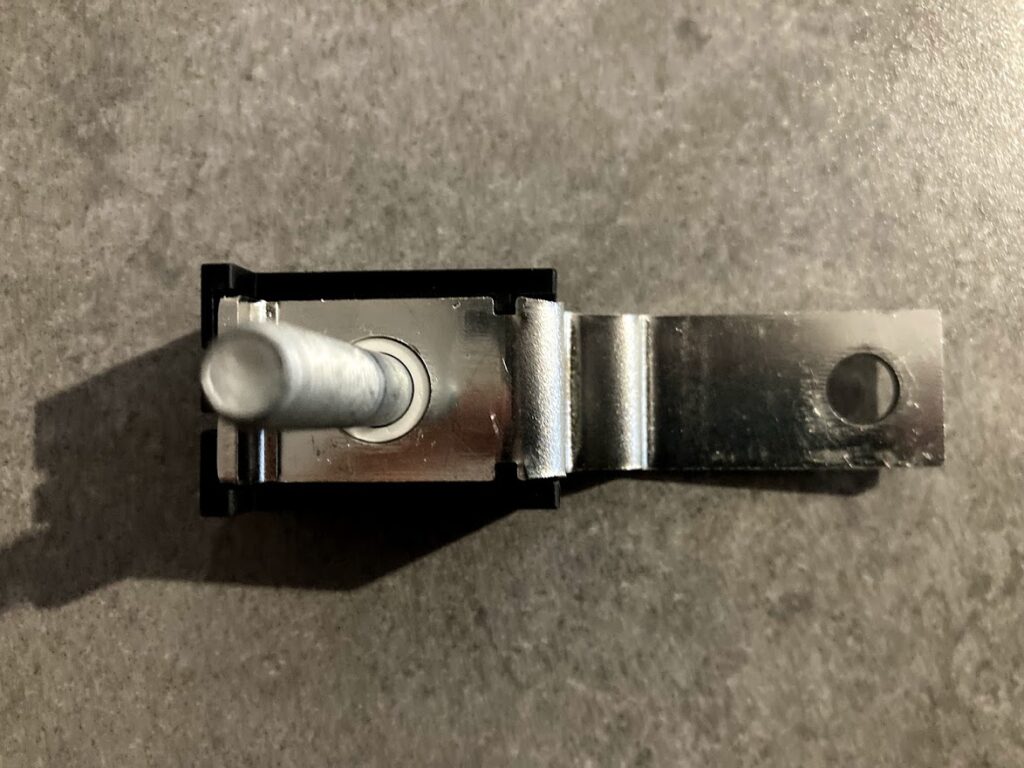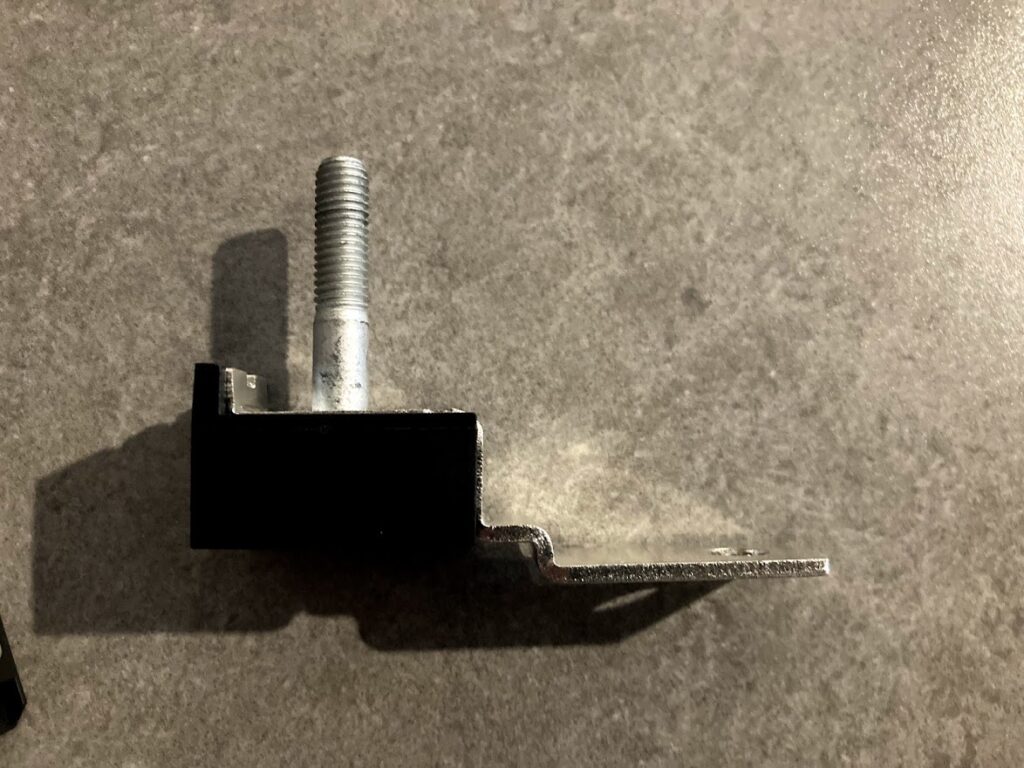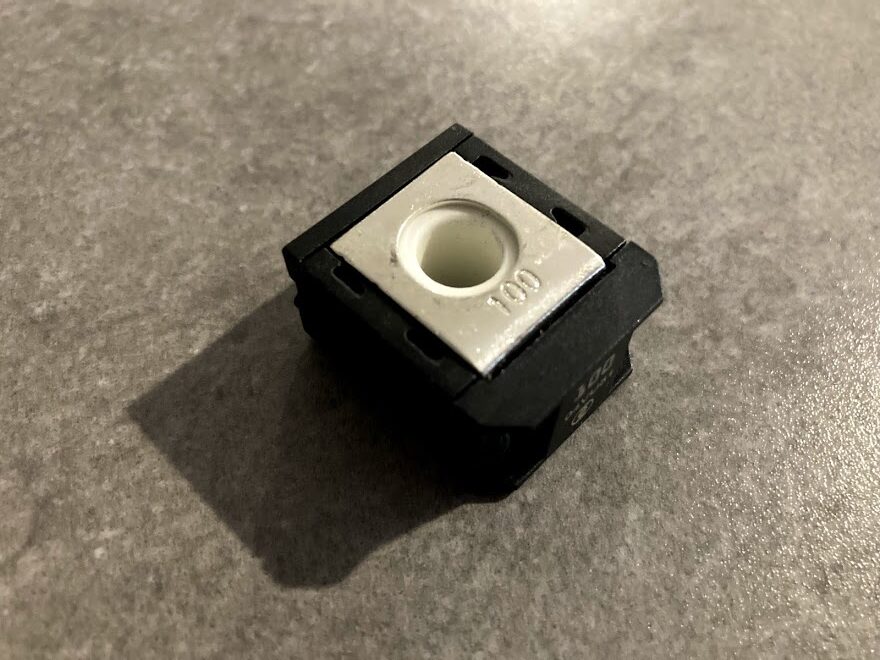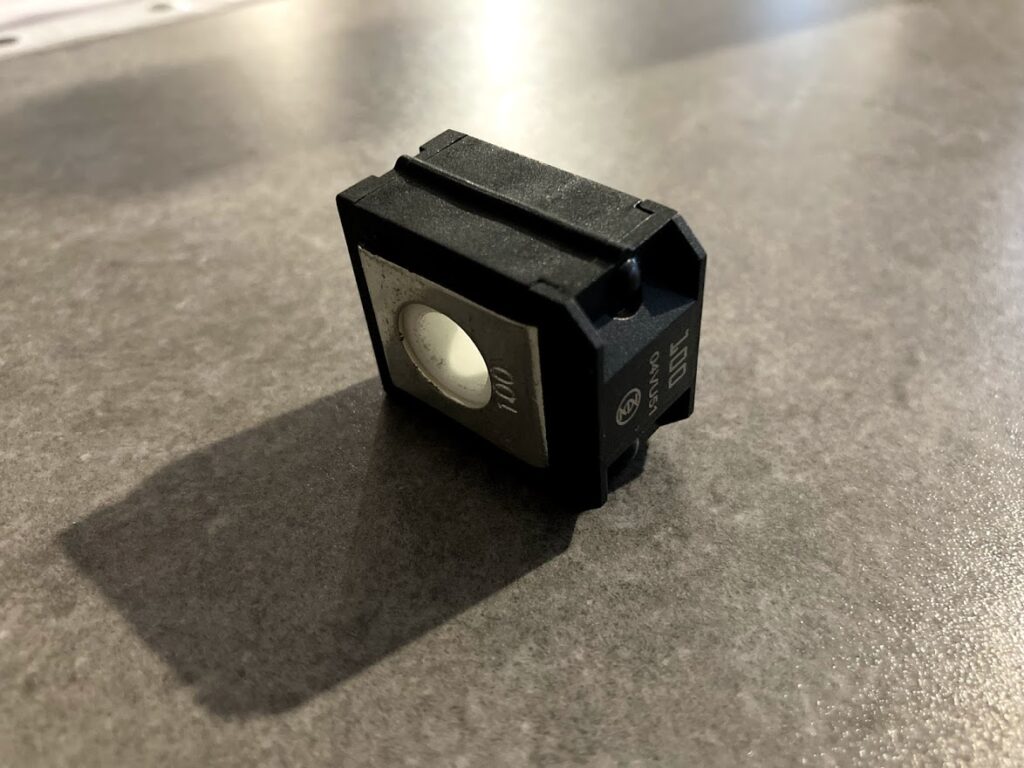After some research into battery fuses for a pair of new 12v lithium (LiFePO4) batteries I couldn’t decide between an ANL fuse system or what Narva refers to as a “Bold Down battery Fuse” (Also know as a Marine Rated Battery Fuse (MRBF)) Narva P/N: 54427BL for the fuse base and 54080BL(80A), 54100BL(100A), 54125BL(125A), 54150BL(150A), 54175BL(175A), 54200BL(200A), and 54250BL(250A) for the fuse options. However with limited photos and install docs it was difficult to decide. All resellers only seem to show the stock photos available from Narva.
Thanks to the magic of purchasing both options I can bring you these photos and usage description.
Battery Install
On these batteries with M8 thumb screws the fuse installs with its battery side being the large input leg of the fuse holder. The Lower cable in the photos above is a link cable to a second battery setup in a parallel12v system. The Upper Cable is the 100A fused output that heads down to the loads. Cable in these photos is 35mm2 (2AWG).
On these particular batteries the main fuse body hangs above the battery body only contacting the battery at the terminals. In a permanent install in automotive/marine use I’d add an insulating layer between the fuse body and battery to stop it flexing, especially with heavy cables on the output.
Fuse Housing
The main fuse housing is 4 pieces. A stamped/bent input leg/fuse contact surface, plastic housing, insulating (maybe nylon) ring around the bolt and the bolt. The bolt is separated from the input side of the fuse by a 2-3mm gap. An insulating sleeve within the housing surrounds the bolt.
Fuse
The fuse has two large surfaces to contact the housing on the “input” side and battery lugs/ring terminals on the output side. The housings bolt passes through the middle of the fuse and in low-voltage installs should be insulated completely from the battery side of the fuse. The fusible link that blows in an over-current situation is hidden behind the front face of the black plastic where the “100” is written. Narva specs this fuse for 12V and 24V DCs systems. Any higher voltages might be close enough to spark between the input side and the bolt; and then to the output side bypassing a blown fuse. Not recommended for systems higher then 24V
